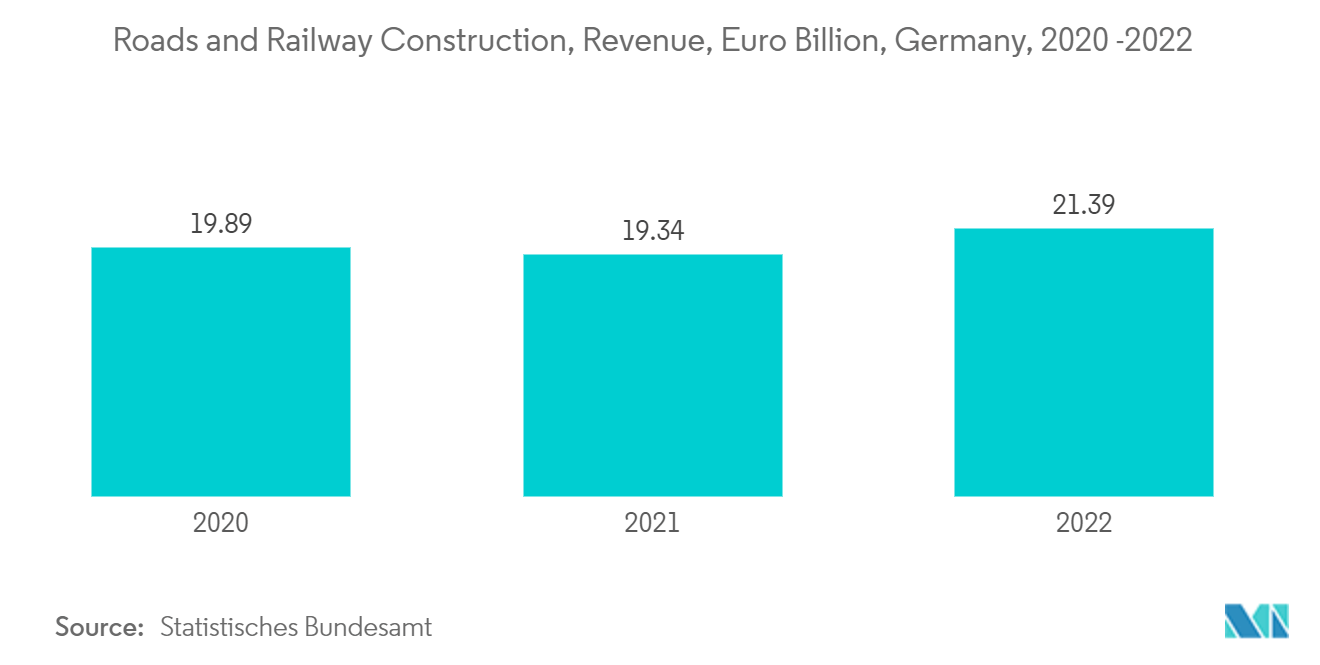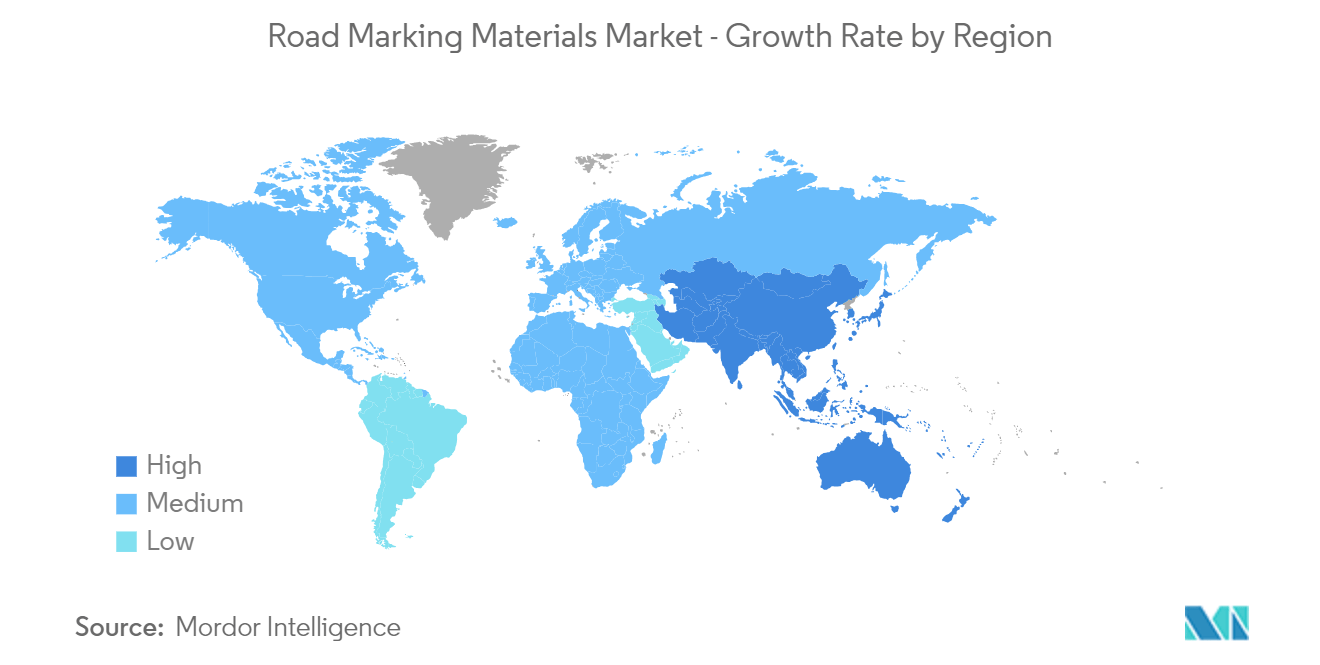Market Trends of Road Marking Materials Industry
Increasing Usage in the Road Markings Segment
- Road marking materials are used for road signalization when applied on the road with or without anti-skid aggregates and with or without dropped-on glass beads. It is mentioned on the product with indications on types and proportions of dropped-on glass beads and/or anti-skid aggregates.
- The longitudinal marking is generally provided along the traffic movement. The broken, single/double continuous, and continuity lines are classified under longitudinal marking.
- Marking across the carriage for traffic control with broken lines, single/double continuous lines such as Stop marking and Give Way marking are classified under Transverse Marking (TM).
- The rising global investment in road infrastructure will likely boost the demand for road marking materials. As of January 2022, new highway construction in India was recorded at 40 km per day. The Ministry of Road Transport and Highways aggressively worked toward creating new highway construction records in the country.
- In Germany, the Ministry of Transport and Digital Infrastructure is planning to invest USD 299 million in future technologies, such as electric mobility or automated and networked driving for electric vehicle charging infrastructure. It, in turn, is further expected to increase the consumption of marking materials from parking places and highways. Furthermore, Germany started working on the A49 highway project connecting Schwalmstadt and the Ohmtal interchange in Central Hesse. This project is based on the public-private partnership model with an investment of USD 698 million for road construction and is expected to be completed in the third quarter of 2024.
- In March 2023, Construction Europe stated that Europe is investing significantly in road construction projects valued at around EUR 448 billion (USD 487.23 billion) and nearly EUR 182.8 billion (USD 198.81 billion) in the execution stage. Russia is leading in the total investment of road construction projects with EUR 61 billion (USD 66.34 billion).
- Therefore, these road construction projects in various countries are expected to drive the demand for road marking materials during the forecast period.

Asia-Pacific Region to Dominate the Market
- The Asia-Pacific region is expected to dominate the market, and China is the largest economy in terms of GDP in this region. China and India are among the fastest emerging economies in the world. The increasing concerns for road traffic safety recently led to increased demand for road marking materials to ensure lane driving.
- China is one of the largest countries in the world, with a vast network of roads and highways. As per the Ministry of Transport of China, the country's total length of public roads stretches for about 5.28 million km. The road network is constantly increasing at a steady pace. The national road network will comprise 461,000 km of safe and intelligent roads by 2035. China will also include 299,000 km of highways and 162,000 km of expressways by 2035.
- China also initiated the Belt and Road Initiative (BRI), joining other European countries, Asia, the Middle East, Latin America, and Africa to enhance regional connectivity with road and rail constructions. The project includes a target completion date of 2049. The cost of BRI is projected to reach USD 1.2-1.3 trillion by 2027. All such expansions and the regular maintenance of roads and highways attract significant demand for road marking materials in the country.
- The Government of India aims to construct 65,000 km of national highways costing around USD 741.51 billion by this year. Andhra Pradesh will spend USD 296.05 million to build 8,970 km of roads. With further transformations in road infrastructure in Punjab, Haryana, and Rajasthan, the Indian government plans to construct roads extending 313 km for USD 1.48 billion. Along with such initiatives, the government, under the Union Budget 2022-23, allocated USD 26.04 billion to the Ministry of Road Transport and Highways.
- The road network in Japan adds up to a length of more than 1.28 million km, including thousands of bridges and tunnels due to its geographical demography. Roads in the country contribute to economic activities and are indispensable for natural disaster relief.
- Due to such large-scale projects, the demand for road marking materials is expected to increase substantially in the coming years.


